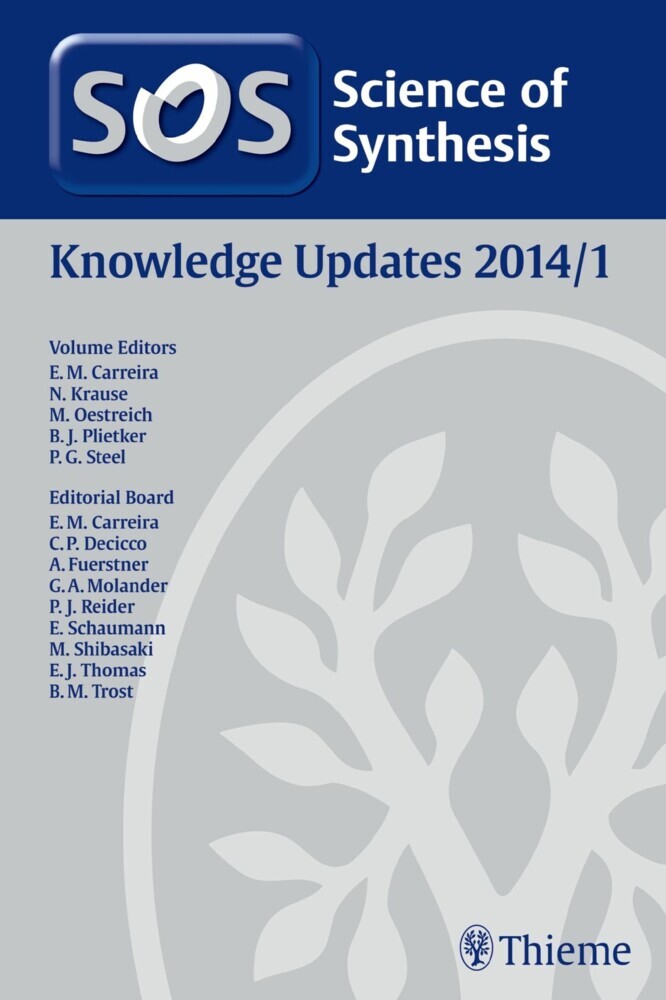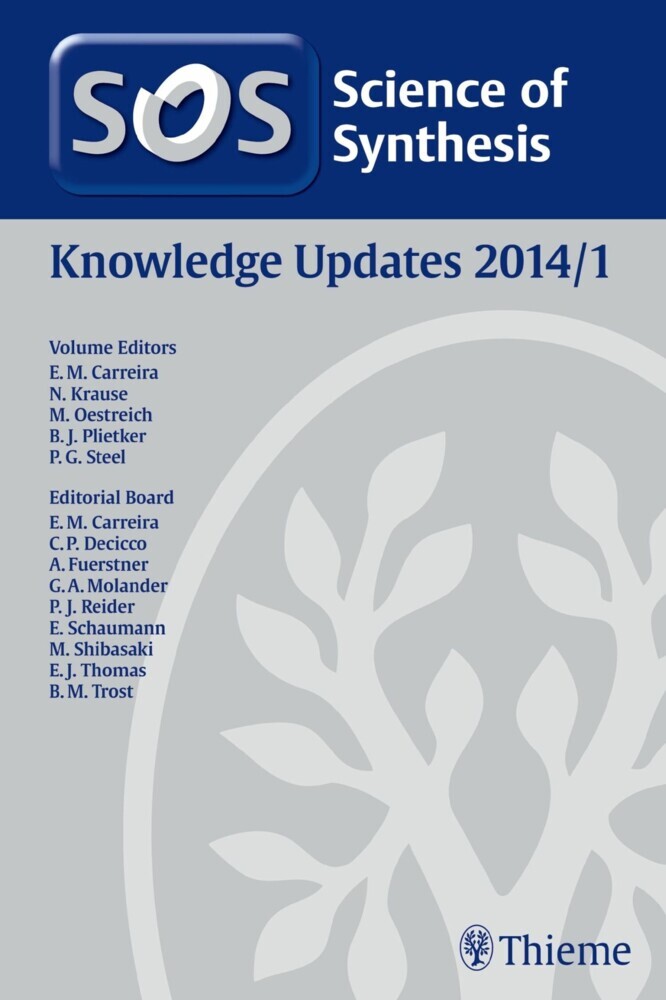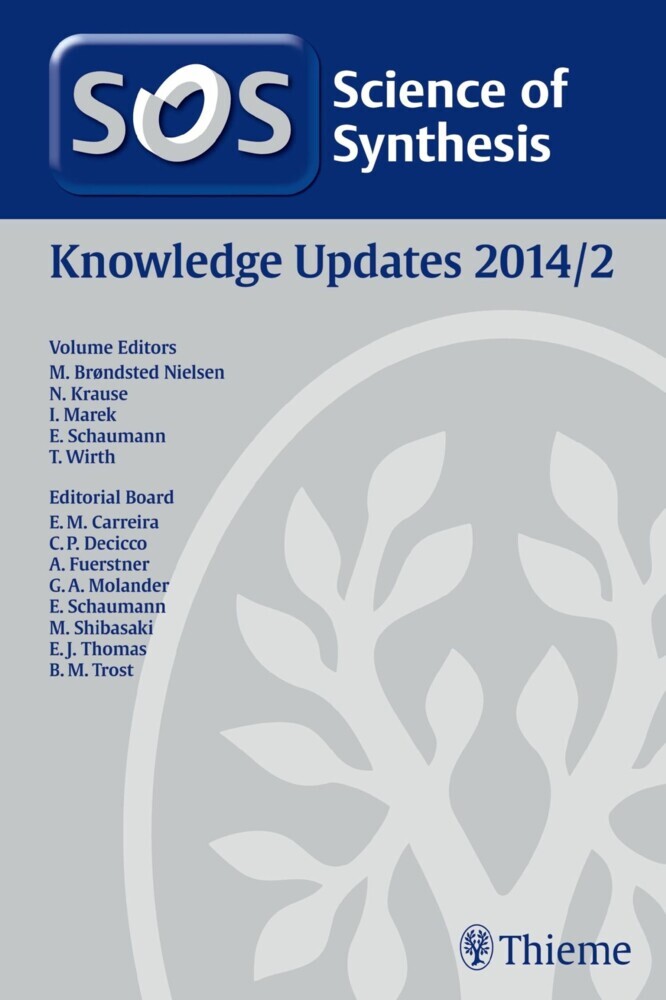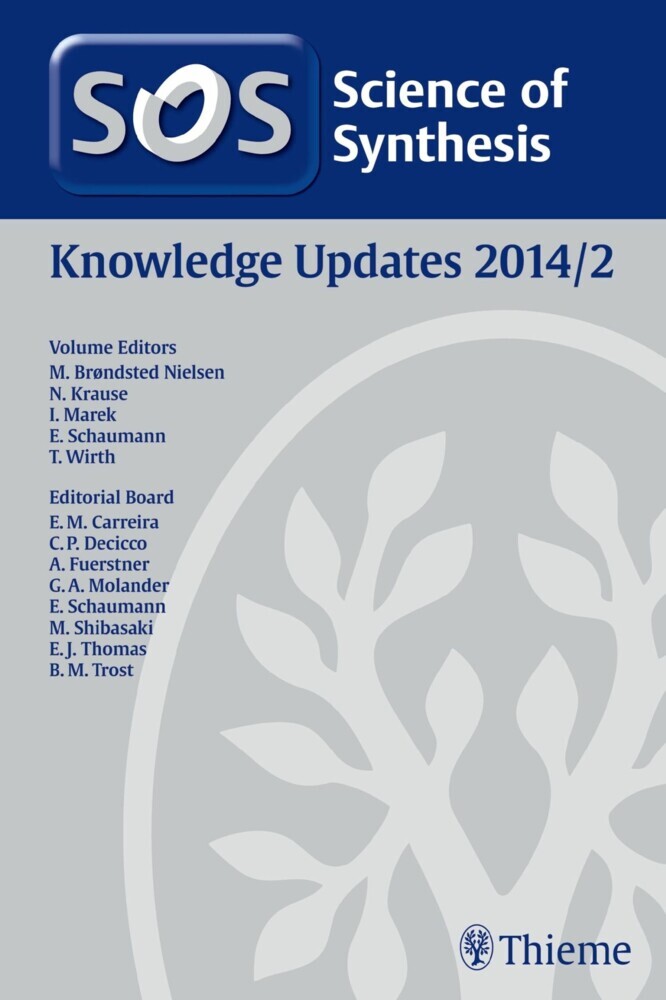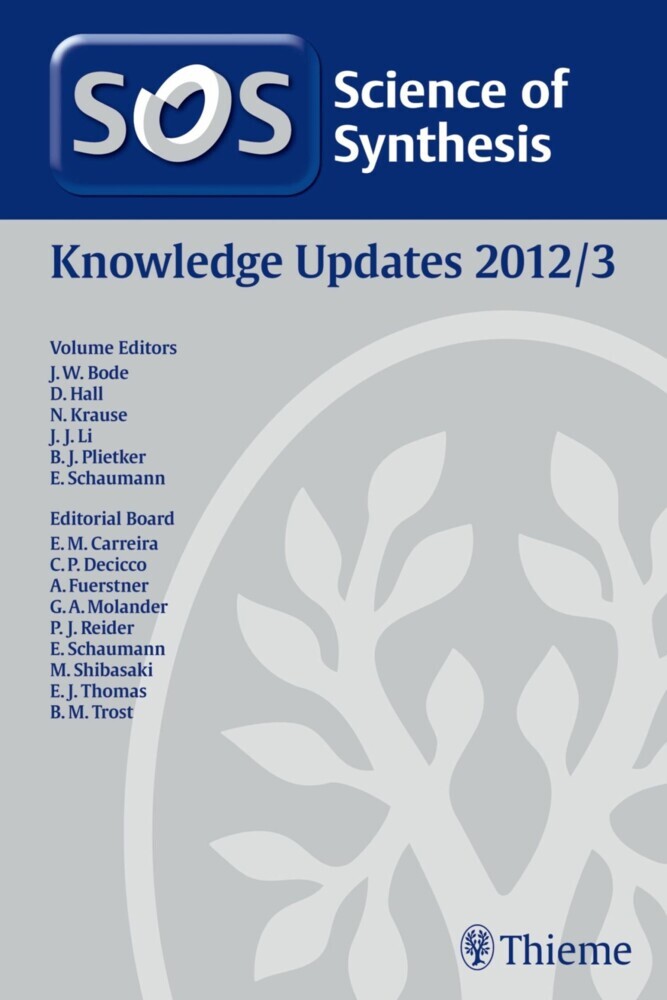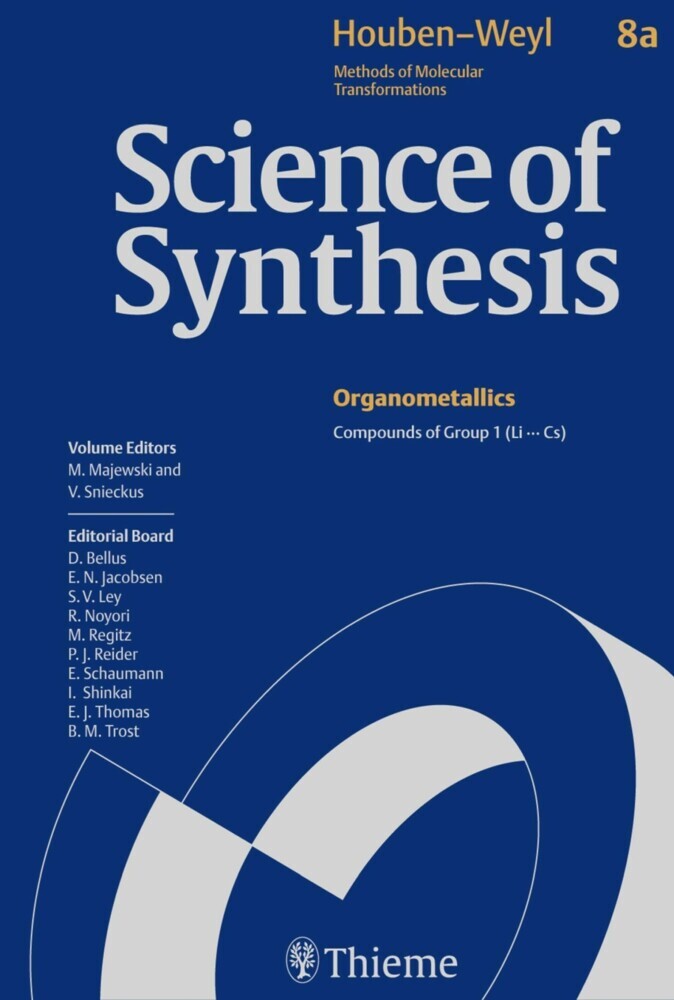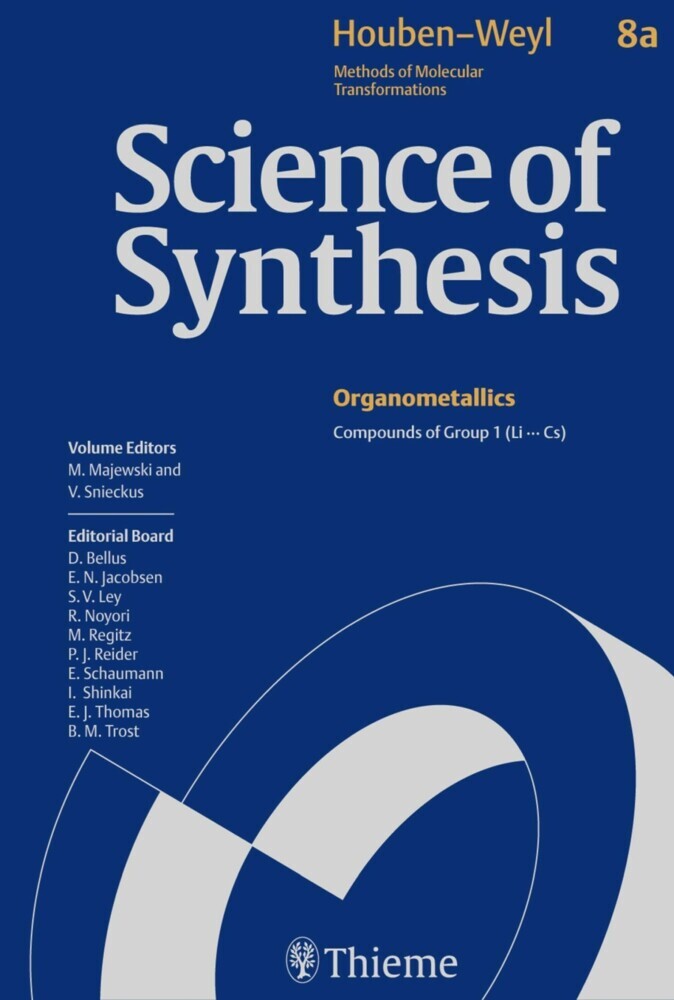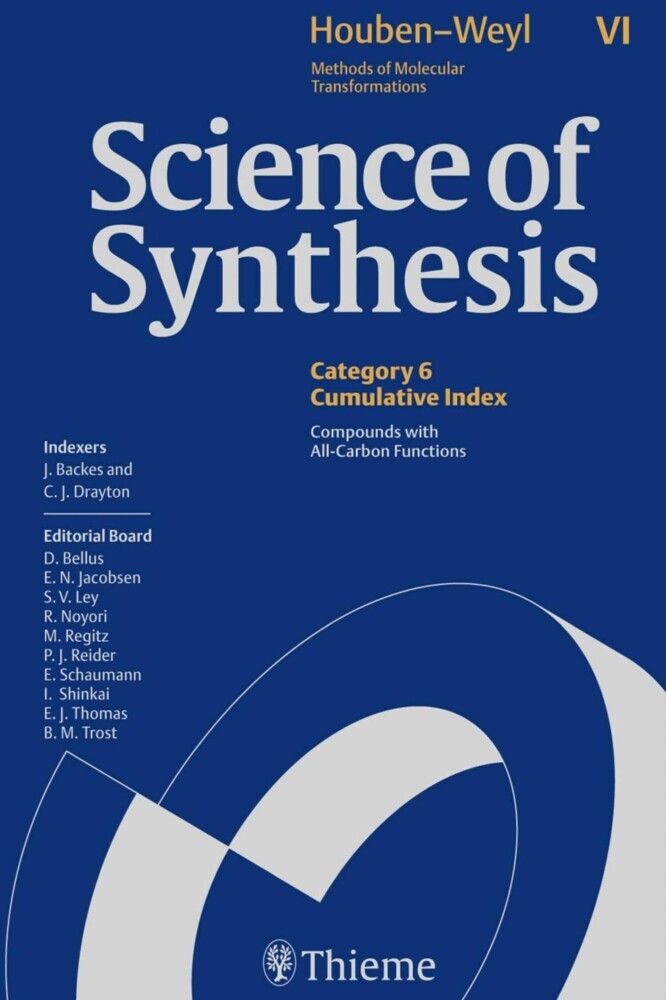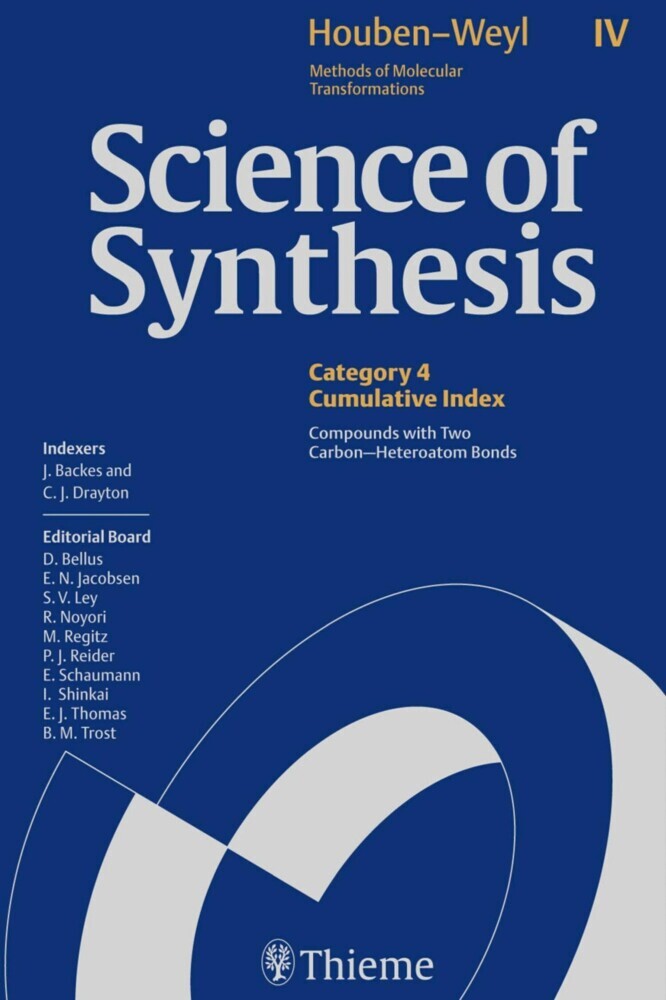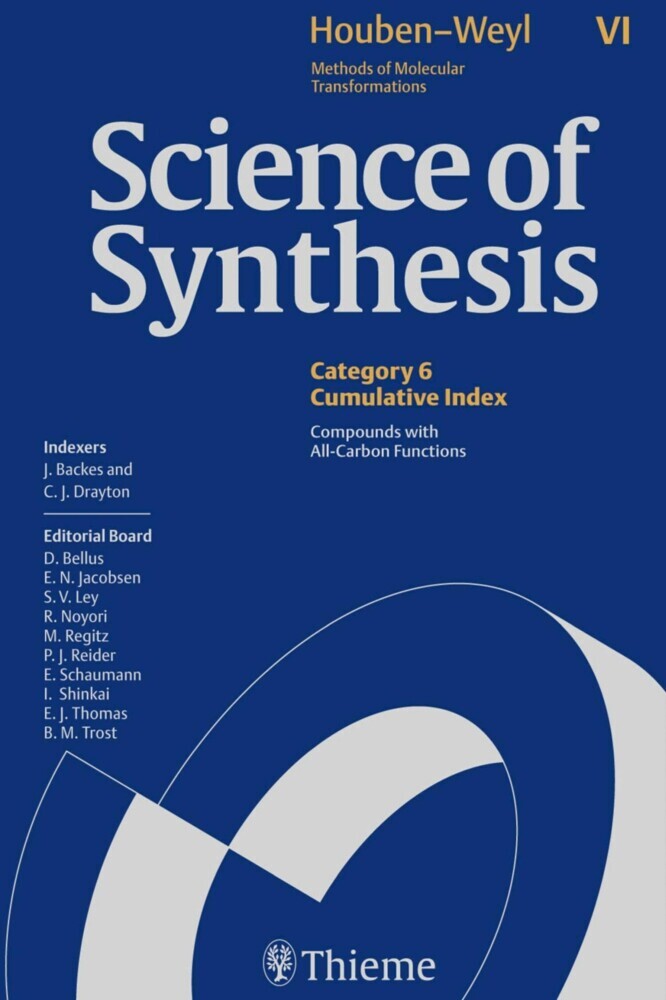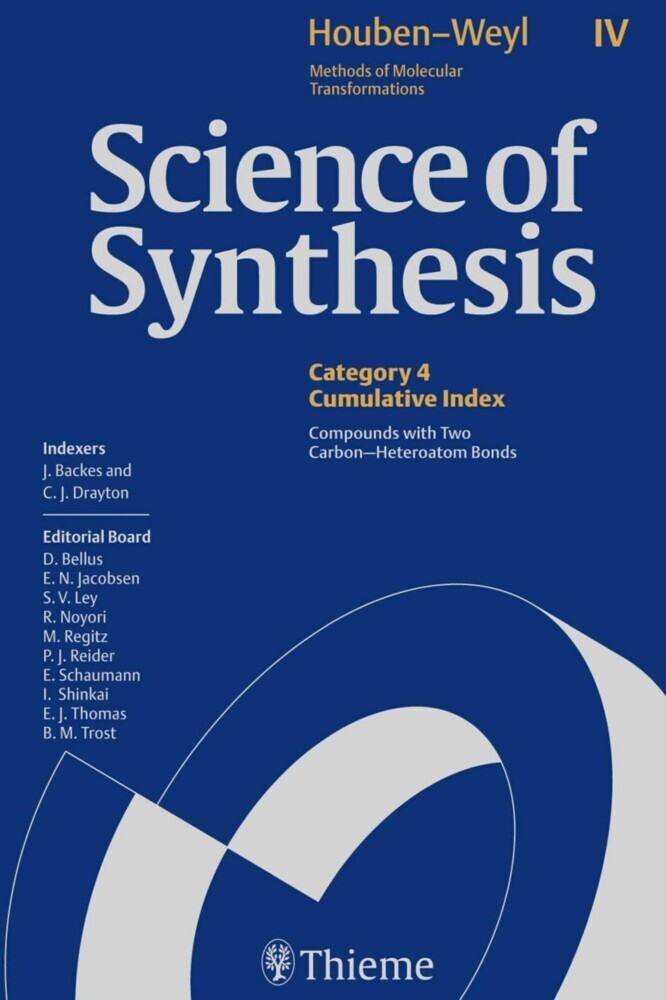Science of Synthesis Knowledge Updates 2014 Vol. 1
Science of Synthesis is a reference work for preparative methods in synthetic chemistry. Its product-based classification system enables chemists to easily find solutions to their synthetic problems.
Key Features:
Critical selection of reliable synthetic methods, saving the researcher the time required to find procedures in the primary literature. Expertise provided by leading chemists. Detailed experimental procedures. The information is highly organized in a logical format to allow easy access to the relevant information.
The Science of Synthesis Editorial Board, together with the volume editors and authors, is constantly reviewing the whole field of synthetic organic chemistry as presented in Science of Synthesis and evaluating significant developments in synthetic methodology. Four annual volumes updating content across all categories ensure that you always have access to state-of-the-art synthetic methodology.
1;Science of Synthesis: Knowledge Updates 2014/1;1 1.1;Title page;5 1.2;Imprint;7 1.3;Preface;8 1.4;Abstracts;10 1.5;Overview;14 1.6;Table of Contents;16 1.7;Volume 1: Compounds with Transition Metal--Carbon p-Bonds and Compounds of Groups 10 - 8 (Ni, Pd, Pt, Co, Rh, Ir, Fe, Ru, Os);28 1.7.1;1.7 Product Class 7: Organometallic Complexes of Iron;28 1.7.1.1;1.7.1 Product Subclass 1: Iron-Arene Complexes;33 1.7.1.1.1;Synthesis of Product Subclass 1;33 1.7.1.1.1.1;1.7.1.1 Method 1: Direct Complexation of Arenes;33 1.7.1.1.1.2;1.7.1.2 Method 2: Iron-Catalyzed Cycloaromatization;35 1.7.1.1.1.3;1.7.1.3 Method 3: Modification of .6-Complexes;35 1.7.1.1.1.3.1;1.7.1.3.1 Variation 1: Replacement of Chloride in Chlorobenzene Complexes by Nucleophiles;36 1.7.1.1.1.3.2;1.7.1.3.2 Variation 2: Use of Palladium-Catalyzed Coupling in the Presence of Cationic Iron-Cyclopentadienyl Complexes;37 1.7.1.1.1.3.3;1.7.1.3.3 Variation 3: Use of Nucleophilic Complexes Obtained by Deprotonation of Arene-Cyclopentadienyliron Complexes;38 1.7.1.1.1.3.4;1.7.1.3.4 Variation 4: Ligand Modification by Ring-Closing Metathesis;38 1.7.1.1.1.3.5;1.7.1.3.5 Variation 5: Nucleophile Addition to a Carbonyl Ligand;39 1.7.1.1.1.3.6;1.7.1.3.6 Variation 6: Modification of Functional Groups in the Presence of Cationic Iron-Cyclopentadienyl Complexes;39 1.7.1.1.2;Applications of Product Subclass 1 in Organic Synthesis;39 1.7.1.1.2.1;1.7.1.4 Method 4: Metal Removal To Give Organic Products;39 1.7.1.2;1.7.2 Product Subclass 2: Iron-Dienyl Complexes;41 1.7.1.2.1;Synthesis of Product Subclass 2;41 1.7.1.2.1.1;1.7.2.1 Method 1: Direct Complexation;41 1.7.1.2.1.1.1;1.7.2.1.1 Variation 1: Reaction of Cyclopentadienyl Anions with Iron Salts;41 1.7.1.2.1.1.2;1.7.2.1.2 Variation 2: Transfer of Cyclopentadienyliron;43 1.7.1.2.1.1.3;1.7.2.1.3 Variation 3: From Neutral Cyclopentadiene Derivatives;44 1.7.1.2.1.2;1.7.2.2 Method 2: Modification of .5-Cyclopentadienyl Complexes;44 1.7.1.2.1.2.1;1.7.2.2.1 Variation 1: Friedel-Crafts Acylation of Ferrocene Complexes;44 1.7.1.2.1.2.2;1.7.2.2.2 Variation 2: Metalation of Ferrocene Complexes;45 1.7.1.2.1.2.3;1.7.2.2.3 Variation 3: Modification of Functional Groups on Ferrocene Complexes;46 1.7.1.2.1.2.4;1.7.2.2.4 Variation 4: Redox Chemistry at the Metal of Ferrocene Complexes;47 1.7.1.2.1.2.5;1.7.2.2.5 Variation 5: Protonation at Iron;47 1.7.1.2.1.2.6;1.7.2.2.6 Variation 6: Manipulation of Di-µ-carbonyldicarbonylbis(.5-cyclopentadienyl)diiron;47 1.7.1.2.1.3;1.7.2.3 Method 3: Preparation by Hydride Abstraction;48 1.7.1.2.1.3.1;1.7.2.3.1 Variation 1: Regioisomer Preparation without Rearrangement;49 1.7.1.2.1.3.2;1.7.2.3.2 Variation 2: Regioisomer Preparation with Rearrangement;51 1.7.1.2.1.4;1.7.2.4 Method 4: Preparation from .4-Triene Complexes with Electrophiles;51 1.7.1.2.1.5;1.7.2.5 Method 5: Preparation from Dienol Complexes with Acid;53 1.7.1.2.1.5.1;1.7.2.5.1 Variation 1: Without Rearrangement;53 1.7.1.2.1.5.2;1.7.2.5.2 Variation 2: With Rearrangement;54 1.7.1.2.1.6;1.7.2.6 Method 6: Preparation by Demethoxylation in Acid;55 1.7.1.2.1.7;1.7.2.7 Method 7: Preparation by Oxidation with Thallium(III) Salts;57 1.7.1.2.1.8;1.7.2.8 Method 8: Preparation from Dienone Complexes;57 1.7.1.2.1.9;1.7.2.9 Method 9: Preparation from .6-Complexes;59 1.7.1.2.1.9.1;1.7.2.9.1 Variation 1: Nucleophile Addition to .6-Complexes at the -System;59 1.7.1.2.1.9.2;1.7.2.9.2 Variation 2: Dealkoxylation of .6-Complexes;60 1.7.1.2.1.10;1.7.2.10 Method 10: Nucleophile Addition to .5-Complexes;60 1.7.1.2.1.10.1;1.7.2.10.1 Variation 1: Addition at the p-System;60 1.7.1.2.1.10.2;1.7.2.10.2 Variation 2: Addition next to the p-System;60 1.7.1.2.1.10.3;1.7.2.10.3 Variation 3: Addition at a Carbonyl Group;61 1.7.1.2.1.11;1.7.2.11 Method 11: Access to Salts by a Sequence of Nucleophile Addition and Leaving-Group Removal;62 1.7.1.2.1.11.1;1.7.2.11.1 Variation 1: Without Rearrangement;6
Carreira, Erick M.
Carreira, Erick M.
| ISBN | 9783131984012 |
|---|---|
| Artikelnummer | 9783131984012 |
| Medientyp | E-Book - PDF |
| Copyrightjahr | 2014 |
| Verlag | Georg Thieme Verlag KG |
| Umfang | 523 Seiten |
| Sprache | Englisch |
| Kopierschutz | Digitales Wasserzeichen |

